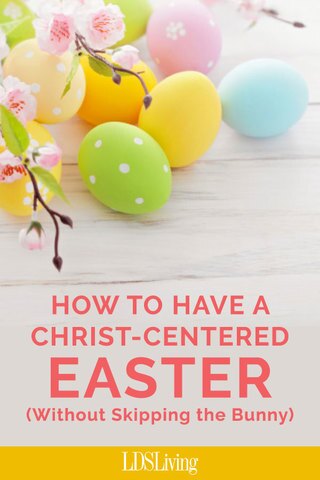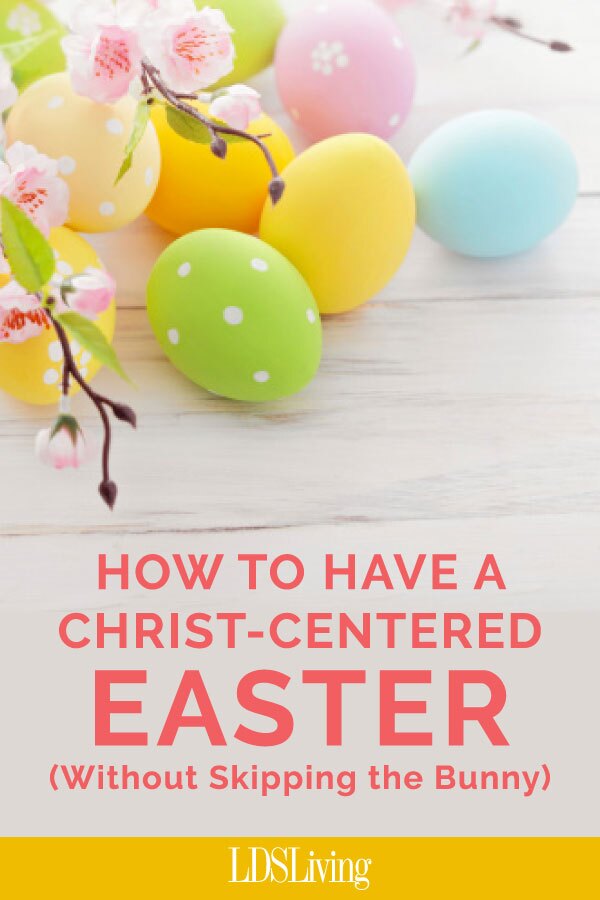
Easter traditions are part of the religious heritage I want my children to identify with, so I want them to matter. I love the Easter bunny, hiding baskets, dying eggs, and buying color-coordinated ties for my boys (they won't agree to matching anymore) and frilly dresses for the girls. Reese’s peanut butter eggs and Cadbury Mini Eggs are very important to me as well. Very important. But, like Christmas pastimes, I want these traditions to enhance—not detract—from the “reason for the season.”
If you have an emotional response to an experience, you’re more likely to remember it. (I’m a pretty emotional person, so you’d think I’d have a better memory, but maybe I’ve over flooded that particular theory. Anywho…) I’m driven to give my kids some good memories through traditions. I figure if we repeat the same traditions, I’m more likely to get them “right” in my kids’ minds when they are all smashed together in a collective memory spanning an entire childhood. That’s the idea, anyway.
Now that my family is getting older, I feel the need to deepen the traditions we observe around Easter. I remind myself that being effective is often being simple. (I also repeat that in my mind often while perusing Pinterest.)
With that in mind, here is what I will be trying out this year with my family. Of course, we will still be eating Reese’s Peanut Butter Eggs and Cadbury Mini Eggs while we do it all!
Look at “Savior of the World” in the March 2015 Ensign. Take time during a family home evening or on a Sunday afternoon to examine the photographs of places where Easter events actually took place. They’re even accompanied with coordinating scriptures. The Ensign staff does an incredible job of collecting photos, artwork, articles, and letters and presenting them in a great way to use as a teaching tool in the home.
Read and discuss “The Reason for Our Hope” by President Boyd K. Packer in the November 2014 Ensign. This is a great current and faith-promoting address about the Atonement. I will take this particular address and use it in a family home evening or discuss it at dinner on Easter. It’s a great focus about why we are so happy to celebrate Easter.
We love Lisa Valentine Clark's newest book, Real Moms: Making It Up as We Go. If you're a mom, you will relate to this book. As moms, we improvise. And we make a lot of things up as we go along because, let’s face it, no manual is ever going to cover all the bases a real mom needs to touch. But if laughter and perspective and a renewed energy to face the day are what you’re after—if you too are a “real mom”—this is the book for you!
-->Start making it up as you go!
Read scriptures about Jesus together and share your favorites. “The Reason for Our Hope,” talks about reading the Topical Guide under the subject “Jesus Christ.” There are 18 pages to explore, examine, and discuss. It would be really simple to have everyone in the family choose their favorite scripture about Jesus Christ during Easter week (a simple “homework” assignment) and share them with each other at Easter dinner or for family home evening.
*A note for grandparents or adults without kids at home: My mom sends out group emails annually to her kids and grandkids the week before Easter. She sends a daily email stating what Jesus did that day, a picture, a statement of what He taught, where He was, and a link to a corresponding LDS.org or bible.org video. They are great daily reminders for our family of the events the week leading up to the Resurrection. And she and my dad end the string of emails with their testimonies, which is great for family history, too.
In addition to taking time to read some great talks and resources as a family, it’s important to me to adjust traditions to the different ages of my children. When I had younger kids (under 10), I spent a lot of time talking about the symbolism of Easter. For example, how eggs remind us of new birth, how the Easter dinner reminds us of the Passover or the Last Supper, and how at Easter people get new shoes, bringing attention to our feet and reminding us of Jesus’ humble service washing His disciples’ feet. This year, I’ll remind them (or teach them for the first time depending on their memories and mine) of these symbols. I might also ask them to look through the Gospel Art Library, past Ensign issues, or go to LDS.org to find their favorite picture of Jesus to share with the family.
I’ll ask my middle kids (10-13) to make a collection of scriptures of their choice from the Topical Guide “Jesus Christ,” and print them off so we can read them together at dinner.
I’ll ask my older kids (15+) to choose their favorite scriptures about Christ and ask them what symbolism they see in scripture stories or in nature that reminds them of Christ. I’ll also ask them what they think it means to be a disciple of Christ.
I don’t think there’s a need to throw out the fun stuff like the egg hunts, baskets, and Peeps in order to focus on the religious nature of this holiday. I want my kids to have really positive feelings about Easter. The gospel is literally “the good news”—the tomb was empty, and that should be celebrated! If we can have family Easter traditions that focus our attention on Christ and peanut butter eggs too, then they’re traditions worth having.
For more great Easter ideas, check out these books at Deseret Book:
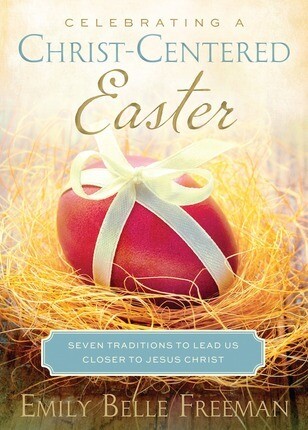
Celebrating a Christ-Centered Easter by Emily Belle Freeman
Discover how the personal experiences of people who were closest to the Savior during the final week of His life can change the way your family celebrates Easter.
-->Start celebrating a Christ-centered Easter
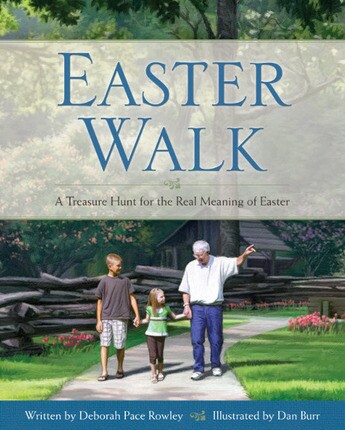
Easter Walk: A Treasure Hunt for the Real Meaning of Easter by Deborah Pace Rowley, Dan Burr
Follow Tyler and Amy as they take a much-anticipated Easter walk with their grandpa. Using clues from the scriptures, they find six objects that symbolize specific moments in the Easter story.
-->Find the real meaning of Easter
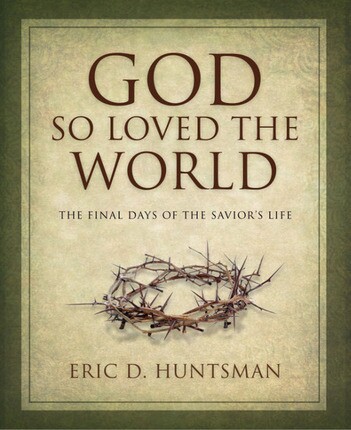
God So Loved the World: The Final Days of the Savior's Life by Eric D. Huntsman
Latter-day Saints have an increased opportunity during the period from Palm Sunday to Easter morning to reflect upon the last days of our Lord's earthly ministry.
-->Learn more about the Savior's final hours

Lisa Valentine Clark graduated with a B.S. in English from Brigham Young University. In addition to experience teaching in the classroom and online for middle school and high school grades, Lisa has also enjoyed a life of performing. She was part of the sketch comedy/improv troupe "The Garrens" in Provo from 1995-2000, and co-founded the theater-as-improv troupe "The Thrillionaires," which performs original, improvised plays and musicals in a variety of genres. If she looks familiar, it might be that you’ve seen her in any number of commercials or independent features, most recently as “Gracie,” the lead actor of Pretty Darn Funny, an award-winning webseries that she also writes and executively produces. If you’ve never seen her before, it’s because she spends most of her time living in Provo with her husband, Christopher Clark. They are the parents of five children who seem to make up a unique comedy troupe all their own.
Catch Lisa Valentine Clark at these upcoming Time Out for Women and Time Out for Girls events:
